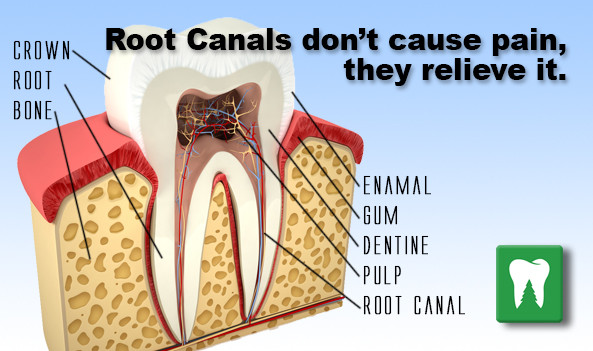
Why is root canal complete with crown? When the pulp inside a tooth becomes infected, a root canal is often the best treatment for fixing the problem and alleviating your pain. Root canals can save your teeth from further decay and dental issues. However, when a root canal is performed, the affected tooth becomes weaker.
A root canal is performed when there is an infection within the tooth. Your dentist will gain access to the center of the tooth to remove the infection, therefore stopping the infection altogether. When an infection reaches the inside, or pulp, of the tooth, it is called pulpitis.
Before a root canal, your tooth can be in severe pain, but the procedure will help remove the pain completely.
What is a root canal and what happens during treatment? Learn more HERE.

Root canals happen often. Chances are, you’ll experience a root canal or two in your lifetime. Thankfully, according to WebMD, root canal procedures have over a 95% success rate. This means that you can breathe a sigh of relief if your dentist brings up the often-dreaded words, “root canal.” In all actuality, root canals are meant to help you avoid pain, and put a stop to any oral pain you’re experiencing. So, typically you should not experience pain after root canal procedure.

After a root canal, it’s common to experience pain for about three to five days following the procedure. However, if the pain persists for longer than that, it could be a sign that there was a complication during the procedure, or that something else is going on that’s causing the pain. There are many reasons why you may experience tooth pain after root canal, and today we’ll talk about what they are and what you can do about them.
Related Article: Are You Suffering from Root Canal Symptoms?